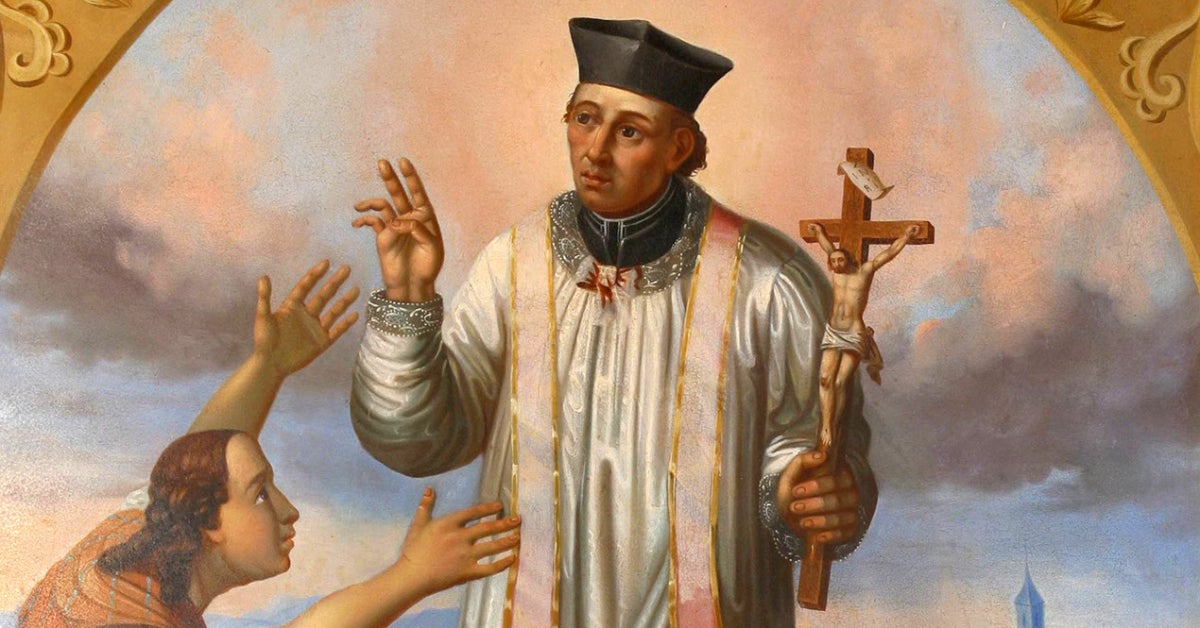‘Your Valentine’: Life of Valentine’s Day’s namesake shrouded in mystery
Published 4:00 am Sunday, February 13, 2022

- Saint Valentine.
It’s known as a special day for lovers.
St. Valentine’s Day, or Valentine’s Day, as it is more commonly called, is a time devoted to love and romance and named for a man whose life and connection to the holiday named after him are shrouded in legend.
According to the website History.com, the Catholic Church recognizes at least three different saints named Valentine or Valentinus, all of whom were martyred.
One legend claims Valentine was a priest who served during the Third Century in Rome. When Emperor Claudius II decided that single men made better soldiers than those with wives and families, he outlawed marriage for young men. Valentine, realizing the injustice of the decree, defied Claudius and continued to perform marriages for young lovers in secret.
When Valentine’s actions were discovered, Claudius ordered that he be put to death. Others insist that it was Saint Valentine of Terni, a bishop, who was the true namesake of the holiday. He was also beheaded by Claudius II outside Rome.
Still another legend suggests that Valentine may have been killed for attempting to help Christians escape harsh Roman prisons, where they were often beaten and tortured, according to the website.
According to one legend, an imprisoned Valentine actually sent the first “valentine” greeting himself after he fell in love with a young girl — possibly his jailor’s daughter — who visited him during his confinement.
Before his death, it is alleged that he wrote her a letter signed “From your Valentine,” an expression that is still in use today. Although according to the website, the truth behind the Valentine legend is murky, the stories all emphasize his appeal as a sympathetic, heroic and — most importantly — romantic figure. By the Middle Ages, perhaps thanks to this reputation, Valentine would become one of the most popular saints in England and France.
And the origin of the holiday that bears his name is also a subject for discussion.
According to the website, some people believe Valentine’s Day is celebrated in the middle of February to commemorate the anniversary of Valentine’s death or burial, about 270 A.D., while others claim the Christian church may have decided to place his feast day in the middle of February in an effort to “Christianize” the pagan celebration of Lupercalia.
Lupercalia was celebrated at the ides of February, or Feb. 15, and was a fertility festival dedicated to Faunus, the Roman god of agriculture, as well as to the Roman founders Romulus and Remus.
According to legend, at some point in the ceremony, all the young women in the city would place their names in a big urn. The city’s bachelors would each choose a name and become paired for the year with his chosen woman. These matches often ended in marriage.
While Lupercalia survived the initial rise of Christianity, according to the website, it was later deemed “un-Christian” at the end of the 5th Century, when Pope Gelasius declared Feb. 14 St. Valentine’s Day.
It was not until much later that the day became definitively associated with love. During the Middle Ages, according to the website, it was commonly believed in France and England that Feb. 14 was the beginning of birds’ mating season, which added to the idea that Valentine’s Day should be a day for romance.
The English poet Geoffrey Chaucer was the first to record St. Valentine’s Day as a day of romantic celebration in his 1375 poem “Parliament of Foules,” writing, “For this was sent on Seynt Valentyne’s day / Whan every foul cometh ther to choose his mate.”
Valentine greetings were popular as far back as the Middle Ages, though written Valentine’s didn’t begin to appear until after 1400, according to the website.
The oldest known valentine still in existence today was a poem written in 1415 by Charles, Duke of Orleans, to his wife while he was imprisoned in the Tower of London following his capture at the Battle of Agincourt.






